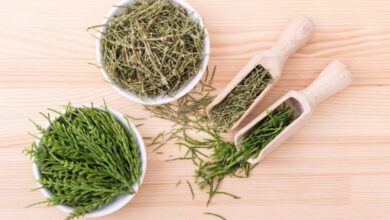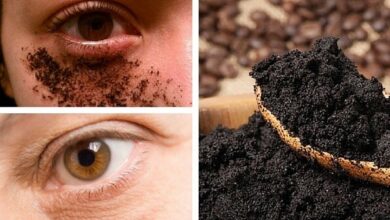Mandarin Diseases: [Characteristics, Types, Detection and Treatment]
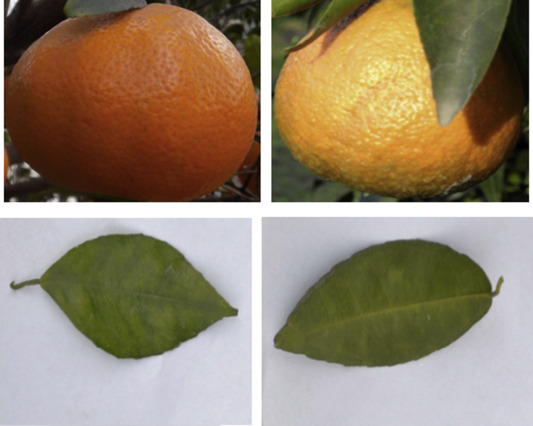
What are mandarin diseases and how can we detect them?
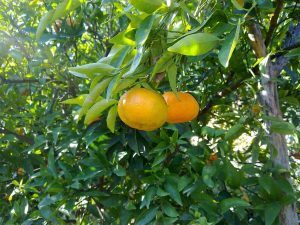 Diseases of the mandarin, one of the most appreciated citrus fruits together with the orange, can be caused by poor management of the crop, excess irrigation and poor fertilization, among others.
Diseases of the mandarin, one of the most appreciated citrus fruits together with the orange, can be caused by poor management of the crop, excess irrigation and poor fertilization, among others.
The damage caused by the diseases that affect the mandarin can be seen in the buds or apices of the new growth branches where they have a higher concentration of nitrogen and in the slowing down of their development.
The mandarin is attacked by fungicidal and bactericidal diseases.Some fungi of the genus Phytophthora sp. produce diseases in the mandarin such as brown rot, the fungus Elsinoe australis: sweet orange scab and black spot caused by the fungus Guignardia citricarpa.
Other diseases that affect the mandarin come from bacteria such as Huanglongbing or Greening caused by the bacterium Candidatus liberibacter; and citrus canker, among others.
Description of mandarin diseases
Among the diseases that usually attack the mandarin, as one of the citrus fruits, we have:
Brown or watery rot
It is a disease caused to the mandarin by various species of fungi of the Phytophthora type. The damage it causes to the plant produces great losses for farmers.
According to scientific research, brown rot is caused mainly by three species of Monilia: Monilinia laxa; M. fructigena and M. fruticola.
Sweet orange scab
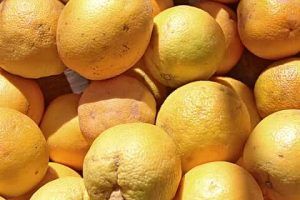 It is a fungal-type disease that can cause serious damage to mandarin and mandarin hybrids.
It is a fungal-type disease that can cause serious damage to mandarin and mandarin hybrids.
It is a disease that slightly attacks the fruits, but does not deteriorate their internal quality, only superficially. The lesions do not affect the leaves or branches.
The pathogen needs moisture to produce spores and for disease to develop.Fungal spores are spread by splashing water, and the disease is thought to spread long distances when people move infected fruit.
citrus black spot
It is a fungal-type disease that causes black necrotic lesions on the fruit, causes premature fruit drop and decreases production when the disease is advanced.
All citrus fruits are susceptible to black spot and especially among them the mandarin.It is a disease that spreads in hot and humid climates.
Huanglongbing or greening
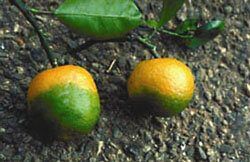 The bacterium Candidatus liberibacter asiaticus multiplies in the conductive vessels of mandarin sap (phloem) and is transmitted by a small hemipteran insect (psyllid) Diaphorina citri.
The bacterium Candidatus liberibacter asiaticus multiplies in the conductive vessels of mandarin sap (phloem) and is transmitted by a small hemipteran insect (psyllid) Diaphorina citri.
It is considered one of the most important diseases of mandarin, and in general of citrus throughout the world, mainly affecting the production of producing countries such as Brazil and the United States.
citrus canker
Caused by the bacterium Xanthomonas axonopodis pv., which causes the premature fall of leaves and fruits, regressive death of the branches, general decline and lesions in the fruits.This disease affects the stems, branches and fruits of the mandarin.
How to identify and eliminate mandarin diseases?
The mandarin produces a highly appreciated citrus fruit in people’s diets, hence the need to identify very well the type of disease that the plant has and use ecological and preventive treatments before chemical ones.
mandarin brown rot
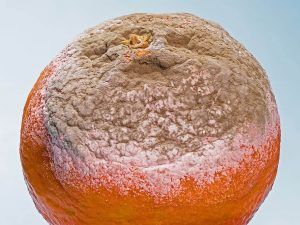 It can be identified by the formation of cankers at the base of the stem; weakening of the plant, defoliation after the typical coloration of the central nerve in yellowish tones.
It can be identified by the formation of cankers at the base of the stem; weakening of the plant, defoliation after the typical coloration of the central nerve in yellowish tones.
However, when diseases affect the plant in a large proportion, and there is no other option, the chemical option must be managed, considered and used.
To combat this disease, the use of some products is recommended, including 44% rapeseed oil; 10% alpha cypermethrin and 30% polyvinyl alcohol combined with 20% ammonium sulfonate.
Sweet orange scab
It causes corky and wart-like lesions on mandarin fruits and are gray or tan in color.The lesions do not appear on the leaves or the branches and the damage produced is generally superficial and does not affect the internal quality of the fruits.
However, infected fruits tend to drop prematurely.Control measures for orange scab should aim at the initial protection of the fruit from the fall of the petals to the first stages of fruit development.
For this, copper fungicides must be applied as efficient foliar protectors, trying to protect the mandarin from this disease.
black spot
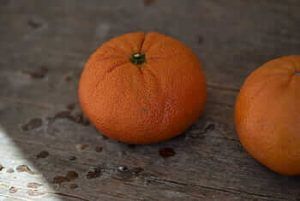 It can be identified because superficial lesions appear on the shell of the fruits. They start as orange or reddish spots with black borders and turn brown or black over time.
It can be identified because superficial lesions appear on the shell of the fruits. They start as orange or reddish spots with black borders and turn brown or black over time.
In crops affected by black spot, measures must be implemented that together help prevent the spread of the disease in the mandarin.
Carry out plantations with healthy seedlings to prevent the entry of plant material contaminated with this and other diseases, and maintain healthy trees.Conveniently control other diseases, since a higher incidence of black spot and fruit drop usually occurs in weakened trees.
Removal of all fruit with remaining symptoms before the start of flowering; cover the fallen leaves on the ground with other plant debris such as green manure to prevent the release of ascospores.
Prune all dry branches to reduce the contamination of diseases and facilitate aeration and improve the penetration of light and agricultural defensives.
Install windbreaks around the property with any fast-growing species to prevent the wind from spreading this and other diseases in the mandarin crop.
Huanglongbing or greening
It causes important lesions in the fruits, the leaves and the intense defoliation of the plant.To combat this disease, experts recommend planting only healthy species; ensure the correct control of pests and diseases from the first year of the transplant.
In addition to the monitoring and control of the Psyllid vector to establish control measures in a timely manner and carry out spraying in times of budding.
citrus canker
It is recognized by the blister-like lesions that appear on the stems, branches and fruits.As it progresses, clear raised necrotic lesions form that are usually surrounded by a yellowish halo.
The stems and branches become covered with crusts or corky spots. It is usually surrounded by a watery border. While the fruits have dark brown, almost black, protruding lesions.
For the eradication of Canker, it is recommended to avoid mechanical damage mainly due to strong winds by installing windbreaks to protect young tissues from possible insect attack.
Protect the fruits from fruit set until they are three centimeters in diameter with cupric fungicide in regions with a high incidence of the disease in order to control this and other diseases.
Bibliography and references
- Mcbride S., R. French, G. Shuster, and K. Ong. Citrus Disease Guide. Department of Agriculture of the State of Texas, US. 2010. PDF.
- González, S. Luis R., Cirilo Catalino Tullo A. Technical guide for citrus crops. Technological Parks Project, San Lorenzo Paraguay; FCA, UNA, 2019. PDF
digital database
- The garden is easy.com. Mandarin, aphid damage pests and orchard diseases. Reproduced from: https://www.youtube.com/watch?v=cfjIMLTIwQ4
- Phytoma.com. Brown rot of stone fruit trees. Reproduced from: https://www.phytoma.com/la-revista/phytohemeroteca/191-agosto-septiembre-2007/la-podredumbre-marron-monilinia-spp-de-los-frutales-de-hueso
- Map.gob.es Registration of phytosanitary products. Reproduced from: https://www.mapa.gob.es/es/agricultura/temas/sanidad-vegetal/productos-fitosanitarios/registro/productos/forexi.asp?e=0&plagEfecto=6&culUso=0102020101000000&ambUti=01&solEsp=

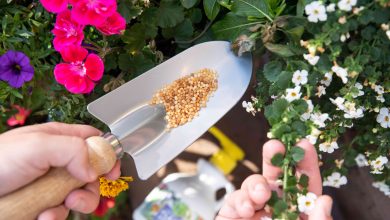
![Photo of Complete Guide on How to Plant Chickpeas: [Images + Step by Step]](https://www.complete-gardening.com/wp-content/uploads/2022/08/complete-guide-on-how-to-plant-chickpeas-images-step-by-step-390x220.jpg)
